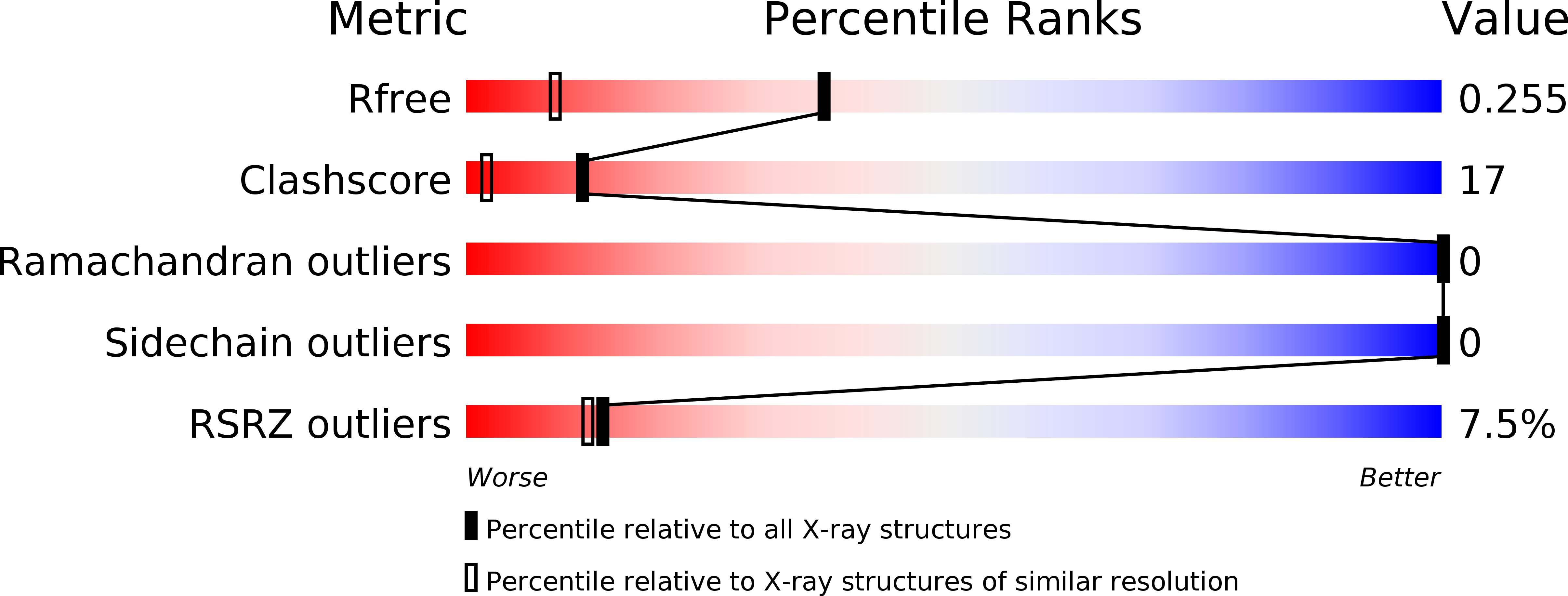Dimerization of Plant Defensin Nad1 Enhances its Antifungal Activity.
Lay, F.T., Mills, G.D., Poon, I.K., Cowieson, N.P., Kirby, N., Baxter, A.A., Van Der Weerden, N.L., Dogovski, C., Perugini, M.A., Anderson, M.A., Kvansakul, M., Hulett, M.D.(2012) J Biol Chem 287: 19961
- PubMed: 22511788
- DOI: https://doi.org/10.1074/jbc.M111.331009
- Primary Citation of Related Structures:
4AAZ, 4AB0 - PubMed Abstract:
The plant defensin, NaD1, from the flowers of Nicotiana alata, is a member of a family of cationic peptides that displays growth inhibitory activity against several filamentous fungi, including Fusarium oxysporum. The antifungal activity of NaD1 has been attributed to its ability to permeabilize membranes; however, the molecular basis of this function remains poorly defined. In this study, we have solved the structure of NaD1 from two crystal forms to high resolution (1.4 and 1.58 Å, respectively), both of which contain NaD1 in a dimeric configuration. Using protein cross-linking experiments as well as small angle x-ray scattering analysis and analytical ultracentrifugation, we show that NaD1 forms dimers in solution. The structural studies identified Lys(4) as critical in formation of the NaD1 dimer. This was confirmed by site-directed mutagenesis of Lys(4) that resulted in substantially reduced dimer formation. Significantly, the reduced ability of the Lys(4) mutant to dimerize correlated with diminished antifungal activity. These data demonstrate the importance of dimerization in NaD1 function and have implications for the use of defensins in agribiotechnology applications such as enhancing plant crop protection against fungal pathogens.
Organizational Affiliation:
Department of Biochemistry, La Trobe Institute for Molecular Science, La Trobe University, Melbourne, Victoria 3086, Australia.















